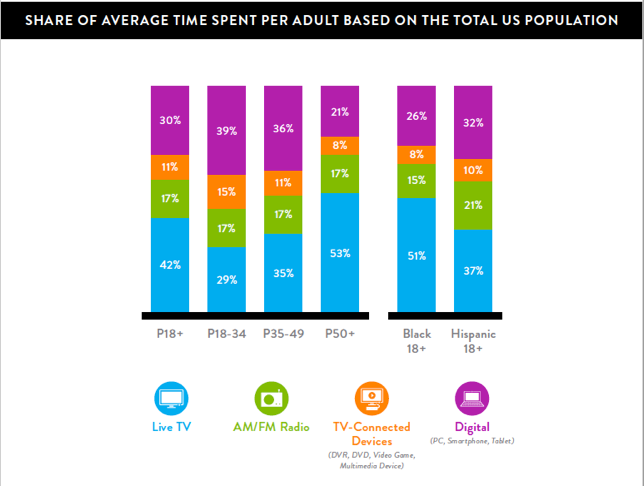As much as media has changed or evolved, it is important to realize much has remained the same.
As much as media has changed or evolved, it is important to realize much has remained the same. It is still important to understand who your target audience is and determine your goal or goals. Ideally, you have reviewed the situation analysis, the marketing plan and the creative strategy plan. Now, we can set the media objectives, which may include:
Increase Exposure (Attention/Awareness)
Measurements: Reach, Impression, View
Increase Interest
Measurements: Reach, Frequency
Increase Preference (Attitudes/Desire)
Measurements: Frequency
Additional objectives more specific to digital and social platforms would include:
Increase Traffic
Measurements: Page Views, Unique Visitor, Length of Visits
Increase Engagement
Measurements: Likes, Shares, Comments, Pins, Google +1s, Retweets, Favorites, Fans, Followers
Generate Leads
Measurements: Hard Leads, Soft Leads
Improve Sales
Measurements: Orders, New Customers, Sales Revenue
In an ideal world, numbers are assigned to the objectives and budget is available to measure the results.
Factors to consider in evaluating the media alternatives include:
- Coverage (percent of the advertiser’s target in the medium’s audience)
- Composition (percent of the medium’s audience in the advertiser’s target)
- Selectivity (composition of the medium compared to the population universe)
- Campaign reach/frequency, effectiveness (however that is defined)
- Cost-efficiency
Traditional media forms such as television, newspapers, magazines, and radio are still important. Although about 74.5 percent of the U.S. population accessed the internet as of 2015, the fragmentation across thousands of sites makes it a challenge to deliver cost-efficient advertising.
The following chart depicts the changes in media consumption since 2012.

It may not be surprising that consumption differs by age. Older Americans prefer more traditional media and younger Americans prefer digital media.

Source: www.Nielson.com
And when it comes to the social portion of digital consumption, the audience still skews younger.

Smarter Questions Yield Better Results
In the “new age of marketing,” there are, as always, no magic bullets. For all opportunities, you need to ask the right questions, determine what your goals are and develop the plan.
No matter what form the new creative units take—banner, rich media, pre-roll advertising before streaming video, SEM and SEO search, online capability merged with HDTV, 3-D television, social media, mobile, Twitter, and others not yet in existence today—whatever comes must still be primarily evaluated in terms of the fundamental concepts of cost-efficiency, coverage, composition of the vehicles, and response to the message.
